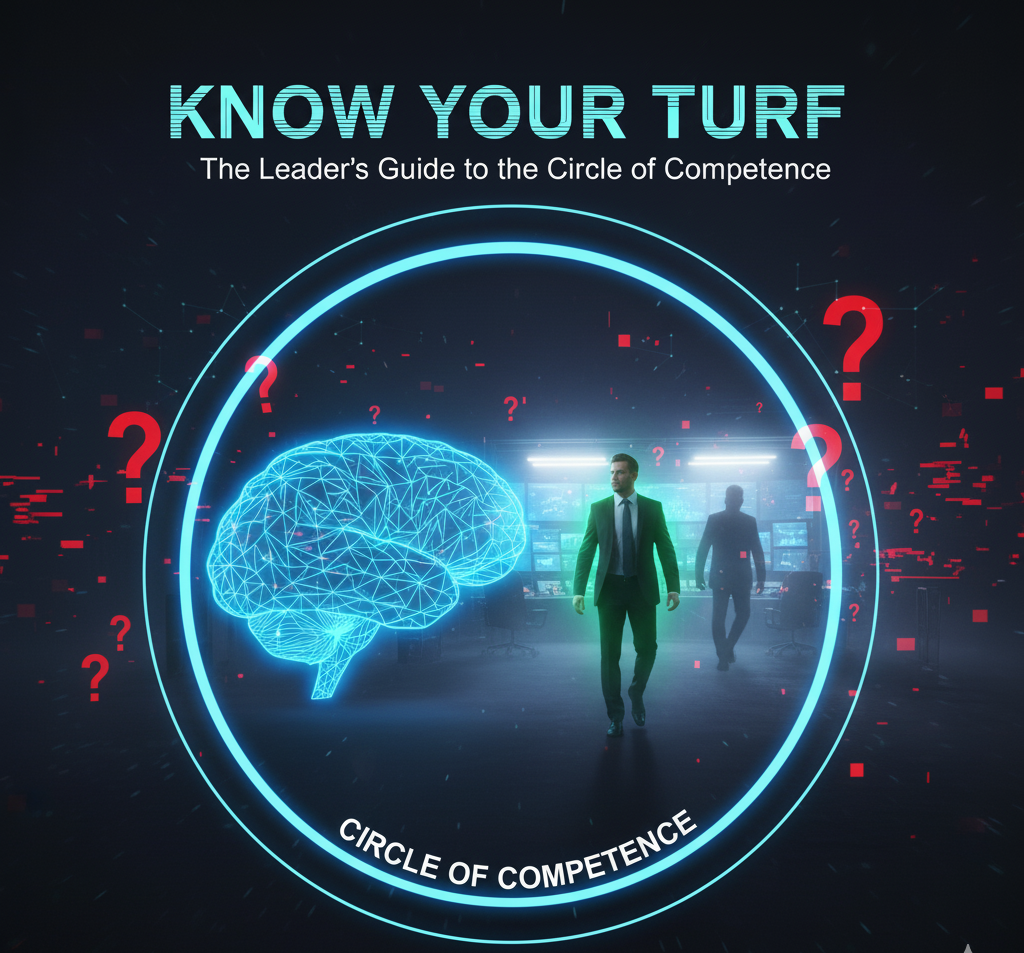
Explanation:
The Circle of Competence is the mental model of identifying the specific areas where you have genuine, deep expertise and then focusing your decisions and actions within those boundaries.
Example:
Warren Buffett became a legendary investor by famously staying within his circle, investing in understandable businesses like insurance and consumer goods while avoiding tech booms he didn’t fully grasp.
Insight:
The most crucial insight is that the size of your circle is far less important than your honesty in knowing exactly where the border is.
Know Your Turf: The Leader’s Guide to the Circle of Competence
One of the biggest dangers in management isn’t ignorance; it’s the illusion of knowledge. In a world that rewards fast answers and bold confidence, the three most powerful words a leader can say are often the hardest: “I don’t know.”
This is the core of the Circle of Competence.
This mental model, popularized by investors Warren Buffett and Charlie Munger, is a simple concept with profound implications. Imagine a circle. Inside that circle is all the knowledge, skills, and experience you truly understand at an expert level. Outside the circle is… everything else.
A person might have a circle for “B2B software sales,” “chemical engineering,” or “managing small creative teams.” This is their “home turf.”
The problem is that in a leadership role, you are constantly pressured to make decisions about things outside your circle. A marketing expert is asked to weigh in on a supply chain problem. A brilliant engineer is promoted to manager and suddenly has to handle team psychology, a field they’ve never studied.
This is where catastrophes happen. Your ego, or the pressure of the job, pushes you to “fake it ’til you make it.” You start guessing. You make a bold call on a topic you only partially understand, and the entire project is put at risk.
The Two Jobs of a Great Manager
Using the Circle of Competence model gives you two primary jobs:
1. Act with Decisive Speed Inside Your Circle
This is your “green light” zone. When a problem or opportunity falls squarely within your circle, you must act with speed and conviction. This is your area of expertise, and your team is counting on that. You’ve earned the right to be bold here.
2. Be Deliberate and Humble Outside Your Circle
This is the “red light” zone. When a problem is outside your circle, your job is not to provide the answer. Your job is to find the answer. This is where you show true leadership. You stop, you ask questions, and you find the person on your team whose circle this problem falls into, and you empower them.
A great leader’s goal is not to have the biggest circle in the room. It’s to have the clearest map. They know precisely where their expertise ends.
This model is the ultimate antidote to ego-driven mistakes. It gives you the humility to say, “That’s a technology question, and I’m not the expert. I’m bringing in our lead engineer to make the final call.” This doesn’t make you look weak; it makes you look wise, secure, and strategic.
Your goal isn’t to be a know-it-all. Your goal is to build a team of experts and have the wisdom to know when to get out of their way.
